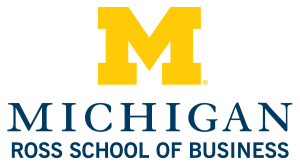The Mountain Institute (TMI) works to improve environmental conditions and the quality of life for local communities in mountainous regions throughout the world. TMI is exploring options for its patented technology for compressed earth blocks. Relative to other technologies serving this market, TMI believes that its compressed earth block (CEB) machine is price competitive, allows for low-cost construction, and is environmentally friendly. Winner of the prestigious 2005 Oikos Case Competition., this case explores using this technology as the centerpiece for a new for-profit venture in the developing world.
Building a Sustainable Venture from the Ground Up: The Mountain Institute’s Earth Brick Machine
by: Ted London
Core Disciplines: Base of the Pyramid, Marketing/Sales, Strategy & Management, Sustainability
Available Documents
Click on any button below to view the available document.
Make sure you are registered and/or logged in to our site to view product documents. Once registered & approved, faculty, staff, & course aggregators will have access to full inspection copies and teaching notes for any of our materials.
$3.95
If you need to make copies, you MUST purchase the corresponding number of permissions, and you must own a single copy of the product.
Electronic Downloads are available immediately after purchase. "Quantity" reflects the number of copies you intend to use. Unauthorized distribution of these files is prohibited pursuant to term of use of this website.
Teaching Note
This product has a teaching note available. Available only to Registered Educators. Please login to view it.
Description
Teaching Objectives
After reading and discussing the material, students should:
- Identify the challenges that non-profit organizations face in developing for-profit initiatives. Nonprofits, by definition, typically are not experienced in for-profit activities. As such, they will likely want to consider collaborations with individuals and organizations with this type of experience. Forming these types of alliances, however, can create a new set of challenges that must be addressed.
- Explore the limitations of a technology-led initiative in this market environment. This then offers the students an opportunity to identify a different business model for non-profits interested in creating revenues streams to support their work in lower income markets in developing countries. Additionally, through this discussion, the students will recognize that non-profits may also have limited knowledge about important developing country issues. The case highlights the need for all organizations, non-profits included, to take a “deep dive” into the local context in order to truly understand the needs of low- income markets in developing countries.
- Investigate the sustainability issues surrounding market entry into the base of the pyramid and the potential for successful business models to migrate to wealthier markets. These bottom-up models may hold important clues for addressing sustainability on a global basis.

